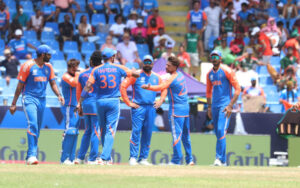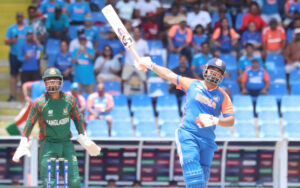
Exhibit 1: Shakib Al Hasan gave the ball a bit of air. Rohit Sharma jumped out, freed his arms and hit it over long-on for a six. A ball later, the India captain late-cut the spinner for a four. Ten runs already scored in the over, Rohit could have played safe. But he decided to take his chances and go over the top again. This time though, the ball stuck in the surface a little and he was not quite to the pitch of the ball. Rohit was out after scoring 23 off 11 balls and on air, the great Sunil Gavaskar called him “selfless” and an “embodiment” of the current Indian team’s philosophy.
Exhibit 2: Virat Kohli was fresh from a six off Rishad Hossain and was going at a pretty decent strike-rate. But like Rohit, he too decided to take his chances and stepped out to hit another maximum against Tanzim Hasan Sakib. Kohli was deceived by an off-cutter and returned to the dug-out after scoring 37 off 28 balls.
Exhibit 3: Rishabh Pant took a six and a four off successive deliveries from Rishad. Then, trying to play a reverse-sweep, he was caught at short third man. The wicketkeeper-batsman made 36 off 24 deliveries. He was trying to keep up with the aggression.
India posted 196/5 in their T20 World Cup game against Bangladesh and there was only one half-century in the innings, scored by Hardik Pandya. But almost everyone around him contributed. There’s a refreshing change in India’s batting approach in white-ball cricket of late. Obsession with personal milestones has given way to collective effort. It’s heartening and the team is thriving after the change.
For the Latest Sports News: Click Here

Ravichandran Ashwin welcomed it via a post on X (the erstwhile Twitter). “We are not used to an approach where batsmen throw it away after making 30’s 20’s, but it is about time we embrace an approach like this especially while batting first,” wrote the master off-spinner. “Top Intent from all the Indian batters so far.”
Batting in T20 cricket is not about scoring centuries and half-centuries. It is about making useful contributions top-down, scoring at a brisk pace and putting pressure on the opposition. India did that against Bangladesh. Every batsman in the top six hit at least one six and ensured there was no drop in the run rate. No wonder then that Rohit was happy after the game.
“That’s how we want to play and encourage ourselves to go forward,” the skipper told the host broadcaster. “We saw only one guy get a fifty, but we still got 196. In T20s, I don’t believe you need to get fifties and hundreds. How you can put pressure on the opposition is what matters.”
India beat Bangladesh by 50 runs to effectively seal a spot in the semi-finals. But the team embracing ‘total cricket’ presented the bigger picture. For far too long, Indian cricket was milestone-obsessed, where selfishness was considered a virtue. Rohit and head coach Rahul Dravid have changed that.
In a few days’ time, Gautam Gambhir will take charge of this side and he is someone who always puts team ahead of individuals. The new head coach will walk into a dressing room that is in sync with his philosophy.
Also Read: Olympic Day special: Abhinav Bindra: “The Quest to be Perfect on an Imperfect day”